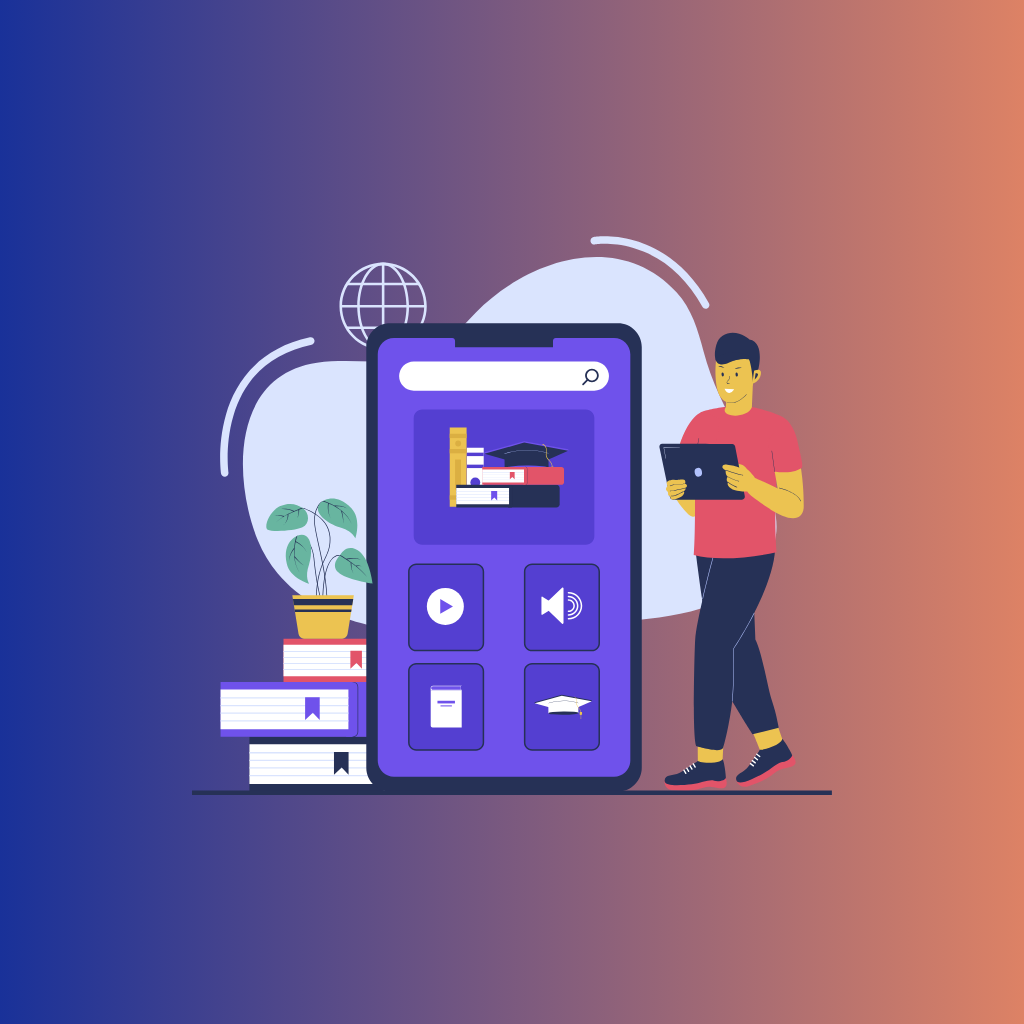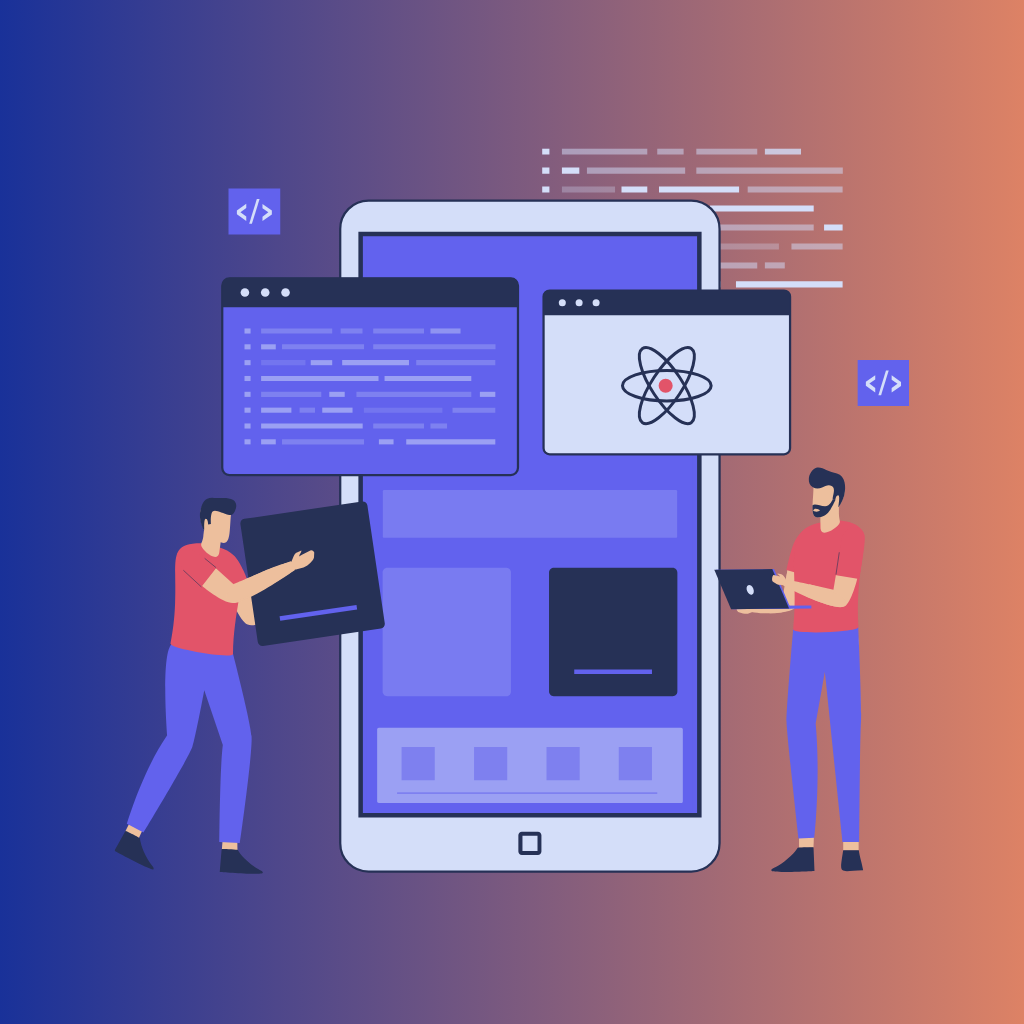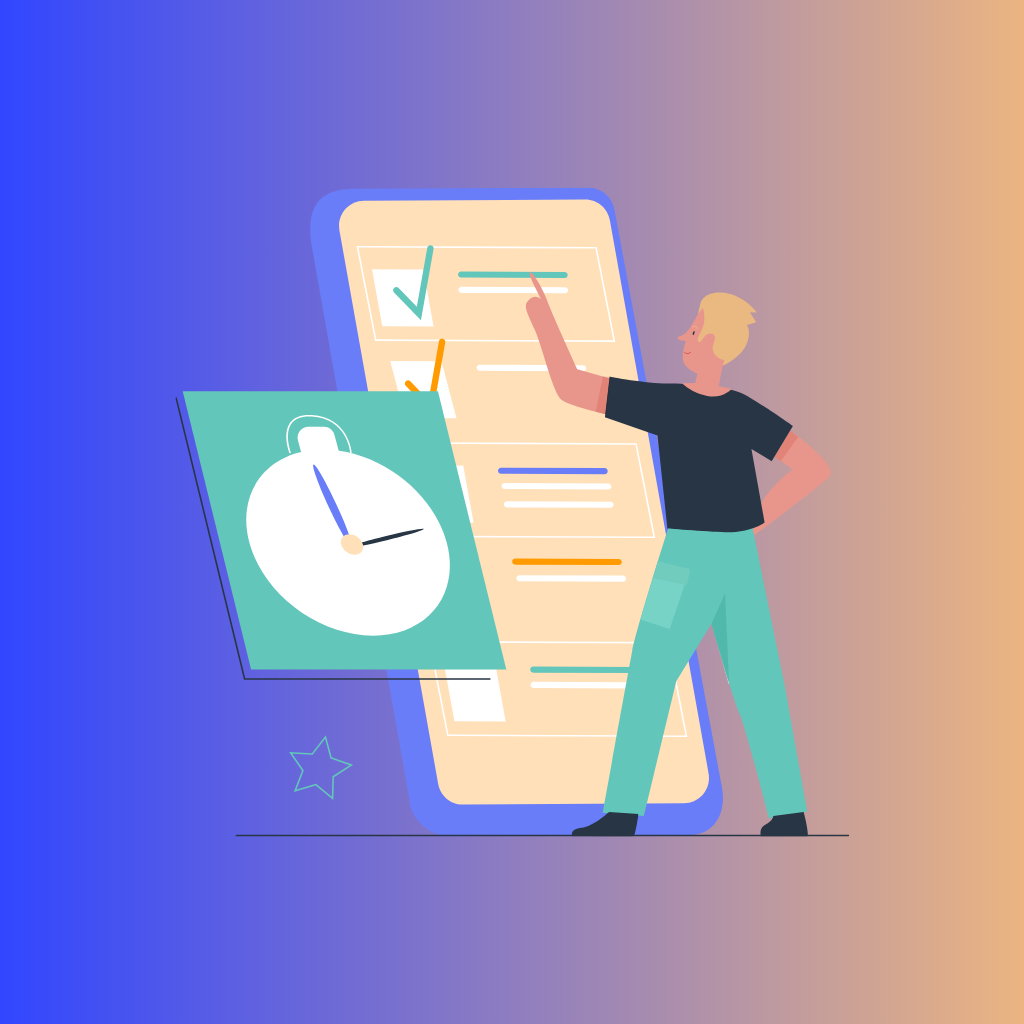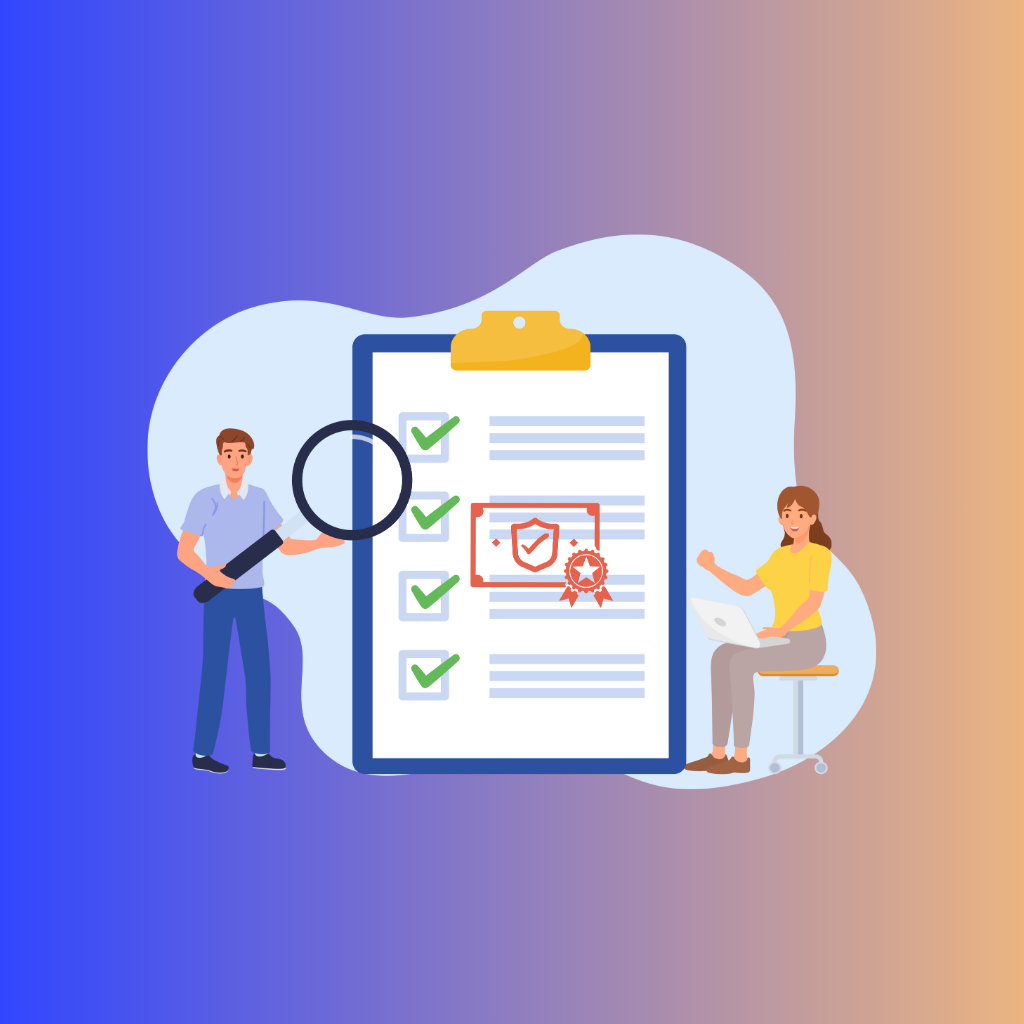Today, mobile apps have become the favorite addiction for smartphone users. With everything from shopping, banking, socializing, and entertainment, there is an app for that. This trend not only changed the way we interact with the world but also the way businesses work.
Mobile apps bring you the convenience, bandwidth, and time efficiency. Having a mobile app for businesses is now a must and not a luxury anymore. These apps provide brands with a direct line to digital customers, nearly limitless opportunities for personalization, invaluable user data, and lasting connections with their audience. At their core, mobile apps are crucial in connecting businesses with consumers, which in today's world of fast, tech-driven consumerism, is a match made in heaven.
I. Everybody Know Mobile App Development
Mobile App Development has come into limelight along with the rise of mobile technology. Creating software applications that run on mobile devices such as smartphones and tablets. These include applications pre-installed on the device, applications downloaded from app stores, mobile web browsers, and so on. Mobile app development is a process wherein app creation through coding, design, building, and testing helps in making the app function correctly and ensure the best user experience.
Mobile App development is built in a definitive manner which may or may not include these stages at some point.
- Idea & Planning: During this stage, your idea is created, and you set out to define what your app's purpose is and what problem it solves. This involves market research to know the target audience and the competition.
- Design: This is where you plan out the aesthetics and visual user interface (UI) for your app. Consider creating wireframes and prototypes of the application to see the layout and flow of the implementation of the app.
- Development: The coding part where app functionalities are written. App developers write the app using programming languages and tools of the platform (iOS, Android, or Cross-platform).
- Testing: Finally, the app is tested to examine and solve any bugs or problems prior to launch. This is to make sure that the app functions smoothly and meets various quality parameters.
- Deployment: After the app is thoroughly tested and refined, it should be submitted to app stores (such as Apple App Store and Google Play Store) for approval and launch.
- Maintenance and Updates: Once you have launched your app it needs constant tweaking and updates to fix bugs, introduce new features, and work on newer versions of operating systems.
Why Mobile Apps Are Important for Businesses and Consumers
For businesses:
- Customer Engagement: They provide a personal way through DTC (direct-to-consumer), to connect with customers directly and make them loyal, while improving customer service.
- Revenue Generation: One of the biggest benefits of having an app is that you can start making extra money via in-app purchases, subscriptions, and advertising.
- Brand Awareness: Being on the user's device is a way to keep the brand in mind and recognize the brand.
- Data Collection: Apps foster customer relationships by helping businesses remain in direct and continuous contact with their customers and by providing businesses with data about customer behavior and preferences.
For consumers:
- Convenience: They have made tasks like banking, shopping, and communication easier and more seamless.
- Personalization: A ton of apps present personalized offerings that vary from user to user based on their interests and activities.
- Availability of Information: The instant reach of information- be it news, weather forecasts, or product details.
- Entertainment: Apps offer numerous entertainment options ranging from gaming to streaming services.
II. Types of Mobile Apps
Native Apps
Definition and Examples
Native apps are built specifically for a particular mobile operating system, such as iOS or Android. These applications are coded in languages native to the platform: Swift or Objective-C for iOS, and Java or Kotlin for Android. Popular native apps include WhatsApp, Spotify, and Instagram.
Advantages
- Performance: Native apps are optimized for the specific platform, which means they run smoothly and efficiently, interacting directly with the device’s hardware.
- User Experience: They offer a superior user experience because they follow the design guidelines and standards of the platform, making them intuitive and easy to use.
- Access to Features: Native apps can fully utilize the device’s features like the camera, GPS, and push notifications, providing a seamless and integrated experience.
Disadvantages
- Cost: Developing native apps can be costly and time-consuming, as different versions need to be created for each platform.
- Maintenance: Maintaining and updating native apps requires more effort since each platform’s version must be managed separately.
- Development Time: The development process for native apps is generally longer because of the need for separate coding and testing for each platform.
Web Apps
Definition and Examples
Web apps are essentially websites that look and function like mobile apps. They run in web browsers and are created using HTML, CSS, and JavaScript. Examples include Google Docs, Trello, and Evernote.
Advantages
- Compatibility: Web apps can operate on any device with a web browser, making them highly versatile.
- Cost-Effective: Developing a single web app that works across all platforms is usually cheaper and faster than building separate native apps for each platform.
- Ease of Maintenance: Updates and maintenance are simpler because changes are made server-side, instantly reflecting for all users.
Disadvantages
- Performance: Web apps often don’t perform as well as native apps because they depend on the web browser and an internet connection.
- Limited Access to Features: They have restricted access to device hardware and features, which can limit functionality.
- User Experience: Web apps might not provide the same level of user experience as native apps since they don’t fully integrate with the operating system’s UI components.
Hybrid Apps
Definition and Examples
Hybrid apps blend elements of native and web apps. They can be installed on devices like native apps but are built using web technologies like HTML, CSS, and JavaScript. Examples include Twitter, Uber, and Instagram.
Advantages
- Cross-Platform Development: Hybrid apps allow for a single codebase to be used across multiple platforms, saving time and resources.
- Access to Device Features: Unlike web apps, hybrid apps can access device features through plugins and APIs.
- Faster Development: Building hybrid apps is generally quicker than developing separate native apps for each platform.
Disadvantages
- Performance: Hybrid apps might not perform as well as native apps because they rely on both web technologies and native components.
- User Experience: While better than web apps, the user experience of hybrid apps may still not match that of fully native apps.
- Complexity: Developing hybrid apps can be complex due to the need to balance between native and web technologies and ensure compatibility across platforms.
III. Mobile App Development Platforms
iOS Development
Overview of iOS Platform
iOS is Apple’s exclusive mobile operating system, powering devices like iPhones, iPads, and iPod Touches. It's renowned for its smooth user interface and strong security features, making it a popular choice for developers aiming for a high-end audience. The iOS platform guarantees a consistent and unified experience, thanks to its strict guidelines that ensure all apps maintain high quality and performance.
Tools and Languages Used
- Swift: Launched by Apple in 2014, Swift has become the main language for iOS development. It's designed to be fast, safe, and easy to understand, which is why developers love it.
- Objective-C: Before Swift, Objective-C was the go-to language for iOS development. Although it's not as common today, it's still used for maintaining older code.
- Xcode: Xcode is Apple’s integrated development environment (IDE) for creating software across iOS, macOS, watchOS, and tvOS. It offers all the tools you need for coding, testing, debugging, and submitting apps to the App Store.
Android Development
Overview of Android Platform
Android, created by Google, is a versatile mobile operating system used on a wide array of devices from various manufacturers. Known for its flexibility and customization options, Android is the most widely used mobile OS in the world. It supports a broad ecosystem, accommodating different devices, screen sizes, and hardware setups.
Tools and Languages Used
- Java: Java was the original language for Android development. It's still widely used because it's robust and versatile.
- Kotlin: Endorsed by Google since 2017, Kotlin is a modern language that's concise and safe. It works seamlessly with Java and is becoming the preferred language for Android developers.
- Android Studio: Android Studio is the official IDE for Android development. It offers a comprehensive suite of tools for coding, debugging, testing, and optimizing apps, including a visual layout editor and an APK analyzer.
Cross-Platform Development
Overview and Benefits
Cross-platform development lets developers create apps that run on multiple operating systems, like iOS and Android, using a single codebase. This approach can significantly cut down development time and costs, making it a compelling choice for many businesses. It ensures a consistent user experience across different devices and platforms while simplifying maintenance and updates.
Popular Frameworks
- React Native: Developed by Facebook, React Native uses JavaScript and React to build apps that feel native on both iOS and Android. It allows for code reuse across platforms, speeding up development and making maintenance easier.
- Flutter: Created by Google, Flutter is a UI toolkit for building natively compiled apps for mobile, web, and desktop from a single codebase. It uses the Dart programming language and offers a rich set of pre-designed widgets for creating high-performance, visually appealing apps.
- Xamarin: Owned by Microsoft, Xamarin uses C# and .NET to build cross-platform apps with a single codebase. It delivers native performance and access to platform-specific APIs, making it a powerful tool for developers familiar with the Microsoft ecosystem.
IV. Key Considerations in Mobile App Development
User-Centric Design
Importance of Designing with the User in Mind
A user-centric design ensures that the app meets the needs and expectations of its users. The design process should focus on creating an intuitive and enjoyable user experience (UX). This involves understanding user behaviors, preferences, and pain points through research and feedback.
- Enhanced User Satisfaction: Apps designed with the user in mind are more likely to satisfy and retain users. An intuitive interface and smooth navigation make it easier for users to achieve their goals, leading to higher satisfaction.
- Increased Engagement: A well-designed app encourages more frequent use and deeper engagement. Features that cater to user needs and preferences keep users coming back.
- Positive Reviews and Ratings: A positive user experience often results in favorable reviews and higher ratings, which can attract more users and improve the app’s visibility in app stores.
Performance Optimization
Ensuring the App Runs Smoothly and Efficiently
Performance optimization is critical for providing a seamless user experience. An app that runs slowly or crashes frequently will frustrate users and likely lead to uninstalls.
- Fast Load Times: Users expect apps to load quickly. Optimizing images, reducing unnecessary animations, and using efficient coding practices can help minimize load times.
- Smooth Navigation: Ensuring smooth transitions and quick responses to user inputs enhances the overall experience. Avoiding lag and delays keeps users engaged.
- Resource Management: Efficient use of device resources, such as memory and battery, is essential. Apps that drain battery quickly or consume excessive data can deter users.
Security
Protecting User Data and Privacy
Security is a paramount concern in mobile app development. Users trust apps with sensitive information, and any breach can have severe consequences.
- Data Encryption: Encrypting data both in transit and at rest protects it from unauthorized access. This is especially important for apps handling financial or personal information.
- Authentication and Authorization: Implementing strong authentication methods, such as multi-factor authentication, ensures that only authorized users can access the app and its features.
- Regular Updates: Keeping the app updated with the latest security patches and fixes helps protect against new threats and vulnerabilities.
Scalability
Planning for Future Growth and Updates
Scalability ensures that the app can handle increasing loads and additional features over time. Planning for scalability from the beginning can save time and resources in the long run.
- Modular Architecture: Designing the app with a modular architecture allows for easier updates and additions. Each module can be developed, tested, and maintained independently.
- Cloud Services: Leveraging cloud services for backend operations can help scale the app efficiently. Cloud platforms offer scalable storage and computing resources that can adjust based on demand.
- Performance Testing: Regularly testing the app under different conditions and loads helps identify potential scalability issues early. This allows developers to make necessary adjustments before problems arise.
In the rapidly evolving digital landscape, mobile app development stands as a critical component for businesses aiming to thrive. Understanding the various aspects of mobile app development, from the types of apps to the platforms and key considerations, is essential for creating successful applications.
We began by defining mobile app development and exploring its process, emphasizing its significance for both businesses and consumers. We then delved into the different types of mobile apps—native, web, and hybrid—each with its unique advantages and disadvantages. Following that, we examined the primary development platforms: iOS and Android, along with cross-platform development options, highlighting the tools and languages used for each.
Investing in mobile app development is no longer optional for businesses; it is a strategic necessity. Mobile apps offer a direct and personalized way to connect with customers, drive engagement, and enhance brand loyalty. They provide valuable insights into user behavior, open up new revenue streams, and help businesses stay competitive in a technology-driven world.









